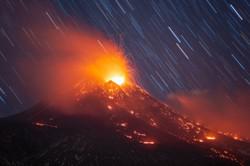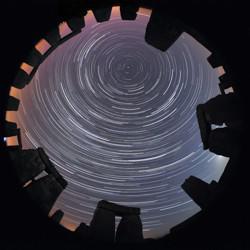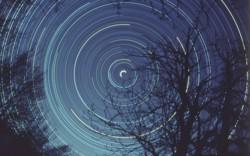Glossary term: 星轨
Description: 在天体摄影中,星轨是使用超长曝光时间拍摄的夜空图像。这是相机随地球旋转的结果,星星在夜空中的运动会在图像中留下痕迹。星轨显示了地球的昼夜运动,如果相机对准天体北极或南极,星轨就会以天空中的极点位置为中心形成半圆。此外,星轨图案还可用于确定观测者的纬度。星轨图像也可以通过在一段时间内进行一系列短时间曝光,然后在照片编辑软件中将它们堆叠(叠加)在一起制作而成。
Related Terms:
See this term in other languages
Term and definition status: The original definition of this term in English have been approved by a research astronomer and a teacher The translation of this term and its definition is still awaiting approval
The OAE Multilingual Glossary is a project of the IAU Office of Astronomy for Education (OAE) in collaboration with the IAU Office of Astronomy Outreach (OAO). The terms and definitions were chosen, written and reviewed by a collective effort from the OAE, the OAE Centers and Nodes, the OAE National Astronomy Education Coordinators (NAECs) and other volunteers. You can find a full list of credits here. All glossary terms and their definitions are released under a Creative Commons CC BY-4.0 license and should be credited to "IAU OAE".
If you notice a factual or translation error in this glossary term or definition then please get in touch.
Related Media
埃特纳火山上的星轨和熔岩羽流,于 2021 年 2 月,意大利,达里奥-吉安诺贝雷( Dario Giannobile)摄
Credit: Dario Giannobile/IAU OAE
License: CC-BY-4.0 Creative Commons 署名 4.0 国际 (CC BY 4.0) icons
石阵与星环,巨石阵上方的星轨,作者:Till Credner,德国
Credit: Till Credner/IAU OAE
License: CC-BY-4.0 Creative Commons 署名 4.0 国际 (CC BY 4.0) icons
半日北极星曝光图,作者:来自意大利的法布里齐奥-梅兰德里
Credit: 法布里齐奥-梅兰德里/国际天文学联合会教育办公室
License: CC-BY-4.0 Creative Commons 署名 4.0 国际 (CC BY 4.0) icons











